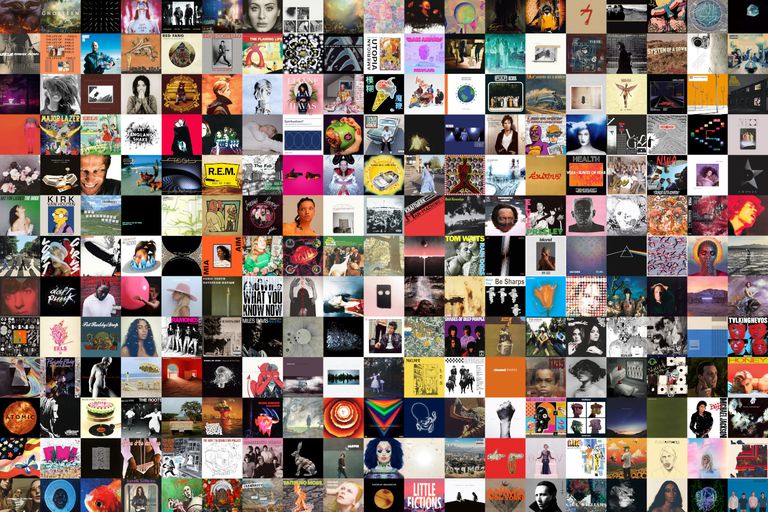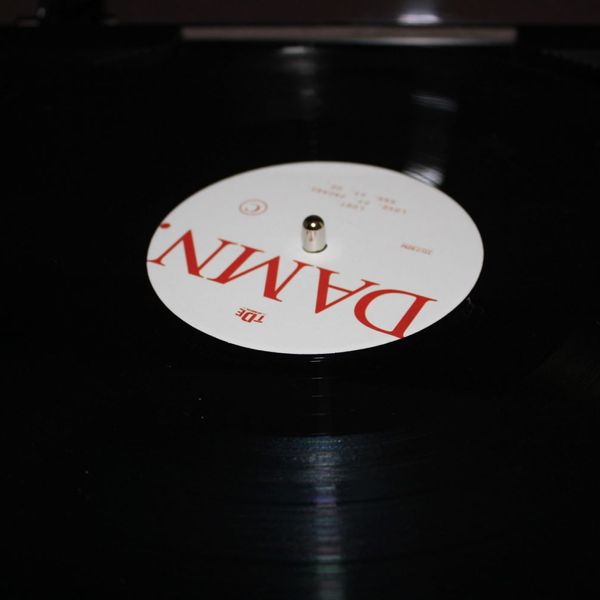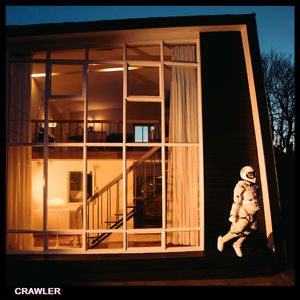Statsioxide: our first 250 reviews in numbers

In 2015, André, Andrew, and I started reviewing albums together. We’d choose a record, spend the week listening to it, spend an evening talking about it, then assign scores. It was a way to experience new music while learning more about ourselves and each other. We enjoyed the process, so we kept doing it, and in October of last year we hit our 250th review.
To celebrate the milestone I’m diving (back) into the numbers behind our arbitrary numbers. Who doesn’t love seeing passion projects reduced to cold, impersonal data reports? We’ve got average scores, genre preferences, even a bit of institutional bias. A birds-eye view, in a nutshell, if you’ll forgive the mixed metaphors.
Brass tacks
Our first ever album review was in January, 2015, and it was of Bossanova by Pixies. It was ok. At the time Andrew and I were in the final years of our respective undergraduate degrees. Andre, having graduated a year earlier, had just started tending bar at an independent venue called the Ramsgate Music Hall.
Our 250th album review was in October, 2020, and it was of Pet Sounds by The Beach Boys. It was great. By then I was a journalist and international sex symbol, Andrew was a full stack developer, and André had worked his way up to be co-owner of the Ramsgate Music Hall. Good going all round.
Of our first 250 reviews 136 were of new releases and 114 were retrospectives. It would take almost eight and a half days to play all of the albums we’ve reviewed back to back. Their combined length is a cool 202 hours, 27 minutes, and 32 seconds (give or take a few seconds.)
Below is the full distribution of overall Audioxide scores, old and new:

The average Audioxide score for new releases is 19.897 out of 30 (or 6.63 out of 10). For retrospectives it’s 23.21/30 (7.74/10), and the overall average is 21.41/30 (or 7.14). The distribution of scores for new releases by year is below.
We tend to lean towards stuff we don’t think we’ll hate, which is why the top of the bell curve overall is higher than The Needle Drop (6.25/10) and Pitchfork (7.00/10). Still, we’re no pushovers when it comes to new releases, as shown by our top scores from each year.
| Year | Highest scoring new album(s) | Score |
|---|---|---|
| 2015 | To Pimp a Butterfly by Kendrick Lamar | 27 |
| 2016 | Blackstar by David Bowie, A Moon Shaped Pool by Radiohead | 24 |
| 2017 | Visions of a Life by Wolf Alice | 27 |
| 2018 | Honey by Robyn, Bottle It In by Kurt Vile, Joy as an Act of Resistance by IDLES, Age Of by Oneohtrix Point Never | 23 |
| 2019 | IGOR by Tyler, the Creator | 23 |
| 2020 | Song for Our Daughter by Laura Marling | 25 |
Song for Our Daughter by Laura Marling was the only time our highest rated album didn’t also top our year-end favourites. (It was edged out by RTJ4 by Run the Jewels.) In the tied years the year-end victors were A Moon Shaped Pool and Joy as an Act of Resistance.
Authors
Overall Audioxide scores are the three author scores combined — with the three authors usually being me (227 reviews), André (236), and Andrew (221). The last time I did this, at the 150 album mark, the emerging trend was that André was the kindest reviewer, I was the harshest, and Andrew floated breezily somewhere in between. This has held true.
| New releases average | Retrospectives average | Overall average | |
|---|---|---|---|
| Andre | 6.806 | 7.794 | 7.254 |
| Andrew | 6.741 | 7.695 | 7.195 |
| Fred | 6.475 | 7.600 | 6.996 |
I know what you’re thinking and the answer is yes, I did opt for three decimal places so my average score would stay below seven.
The site has also had a rather lovely supporting cast of fellow would-be critics who have stepped in whenever one of us has gone awol.
| Reviews | Average score | |
|---|---|---|
| Marcus | 36 | 7.028 |
| Gabriel | 13 | 7.000 |
| Michael | 9 | 7.222 |
| Tom | 3 | 8.000 |
| Charlie | 1 | 5.000 |
| Nick | 1 | 10.000 |
| Rob | 1 | 9.000 |
| Kieran | 1 | 5.000 |
We like to think Marcus has become something of a fourth musketeer, so it’s fitting that his own average score sits neatly between our own.
The 27+ Club
A consequence of our three-piece review system is high scores are actually really hard to get. Getting a nine from one of us is hard; averaging nines from all of us borders on miraculous. Hence our very tastefully named 27+ Club — the albums that have scored 27 or higher.
Only 14 of the first 250 albums made it in to the 27+ Club. That’s a 5.6% success rate. Only two of those were new releases, making the success rate there a mere 1.47%. The full list of members is below.
New releases:
To Pimp a Butterfly by Kendrick Lamar
Visions of a Life by Wolf Alice
Retrospectives:
OK Computer by Radiohead
Homogenic by Björk
The Downward Spiral by Nine Inch Nails
Midnight Marauders by A Tribe Called Quest
Songs in the Key of Life by Stevie Wonder
Cosmogramma by Flying Lotus
Meet The Be Sharps by The Be Sharps
Low by David Bowie
On the Beach by Neil Young
The Dark Side of the Moon by Pink Floyd
After the Gold Rush by Neil Young
Kind of Blue by Miles Davis
What a catalogue. Funnily enough the first ever new release we reviewed together was To Pimp a Butterfly by Kendrick Lamar. Talk about peaking early. We’ve been chasing the dragon ever since.
To date the only artist to appear more than once in the 27+ Club is Neil Young. We’ve reviewed two of his albums and both have made the cut. He is wonderful and we love him.
Decades
In retrospective reviews the most popular decade by far has been the 1990s. We’ve listened to 34 albums from the decade, giving an average score of 23.474. We’re all ‘90s brats, so this fits.
The 1980s are currently the ‘weakest’ decade, scoring an average of 22.235. The highest scoring albums from each decade so far are:
| Highest scoring album(s) | Score | |
|---|---|---|
| 1950s | Kind of Blue by Miles Davis | 27 |
| 1960s | Highway 61 Revisited by Bob Dylan, Revolver by The Beatles | 26 |
| 1970s | Songs in the Key of Life by Stevie Wonder | 28 |
| 1980s | Fresh Fruit for Rotting Vegetables by Dead Kennedys, Remain in Light by Talking Heads, Purple Rain by Prince, Hounds of Love by Kate Bush, Doolittle by Pixies | 25 |
| 1990s | OK Computer by Radiohead | 29 |
| 2000s | The Marshall Mathers LP by Eminem, Funeral by Arcade Fire, Origin of Symmetry by Muse, Demon Days by Gorillaz, Sound of Silver by LCD Soundsystem | 26 |
| 2010s (pre-2015) | Cosmogramma by Flying Lotus | 27 |
Not a bad bunch. The sixties, eighties, and noughties are yet to crack the 27+ Club. The noughties is especially surprising given we were teens for a lot of that time. You’d think something would have cruised in on a wave of pure nostalgia (Origin of Symmetry almost managed it) but alas no.
Genres
Rock was by far and away our most listened to genre, with 133 of the 250 albums falling under that umbrella. The next largest was electronic with 44 albums, then hip hop with 30. You’re always playing with broad strokes when the genres are this loose, but so it goes.
Rock also had the highest average score with 21.647. Next was hip hop with 21.633, then electronic with 21.068. Surprising no-one, pop was the poorest performer at 20.056. It’s not really our bag, baby.
Genders
This was something we hadn’t looked at before — the genders of artists whose albums we’ve reviewed. We thought the results would more or less balance out and boy were we wrong. (Pun not intended, but probably appropriate.)
We’ve reviewed twice as many solo male artists as solo female artists. More than half of the artists we’ve reviewed were groups, but even they tend to be pretty blokey affairs. Is this an industry thing? An us thing? We expect a bit of both, though let’s be real; there’s more than enough music out there for those numbers to be more representative than they are. Something for us to keep an eye on over the next 250.
Nationalities
A similar narrowness emerges when we look at where the artists we’ve reviewed are from. The United States and England are by far the most common nationality (in that order). We’ve listened to music from 15 different countries in all so far. The Audioxide empire as it stands looks pretty good to us, though plenty of musical lands yet to explore.

I suspect the bias here is linguistic rather than regional or cultural, as lyrics play an important part in how we listen. Still, we’ve reviewed enough instrumental albums to know this is an area we can also stand to be more adventurous in. One of the reasons we started reviewing albums together was to introduce each other to new music, after all.
Other tidbits
There are a few more stats worth mentioning. Iterations of the site come to mind. We’ve built two so far. The original was launched in January of 2016. You can still see it here. A new and improved version of the site went live in November of 2020. Its ongoing development can be followed on GitHub. The site has more than 250 reviews and more than 30 articles, as well as a handful of interviews, listening parties, and other oddities.
Bizarrely we’ve also had a fair few visitors over the years — tens of thousands, apparently. According to Google around 4,000 people a month find the site through search engine queries, a number backed up by our analytics. One of our reviews has even turned up as a source on Wikipedia. We had nothing to do with it, we swear.

What else… an American craftsman called Gerald Lauze made a giant cassette of Kirk Van Houten’s timeless record Can I Borrow a Feeling? and used the track names from our review on it. Pretty cool. At over 6,000 words our longest article by far is Charlie Clissitt’s truly epic ranking of every single Bob Dylan studio album. No doubt there are other interesting facts, but they may have to wait until our next retrospective.
The numbers don’t decide
Audioxide started as a hobby and that’s what it remains. We do it to enrich our lives with good music and good talk. The stats are fun — and as we’ve seen, sometimes useful — but as much as anything else they’re an excuse to look back on all the ground we’ve covered together. It has been a joy.
Who knows where we’ll each be in another five years. Reviewing 500 albums together seems unthinkable, but then so did 250 once upon a time. Let’s see where the music takes us.

Related Posts

Statsioxide: our first 150 reviews in numbers

Our 10 favourite albums of the 2010s

Dylan Seeger: ‘Albums take you on journeys that 4-minute singles will never replicate.’











